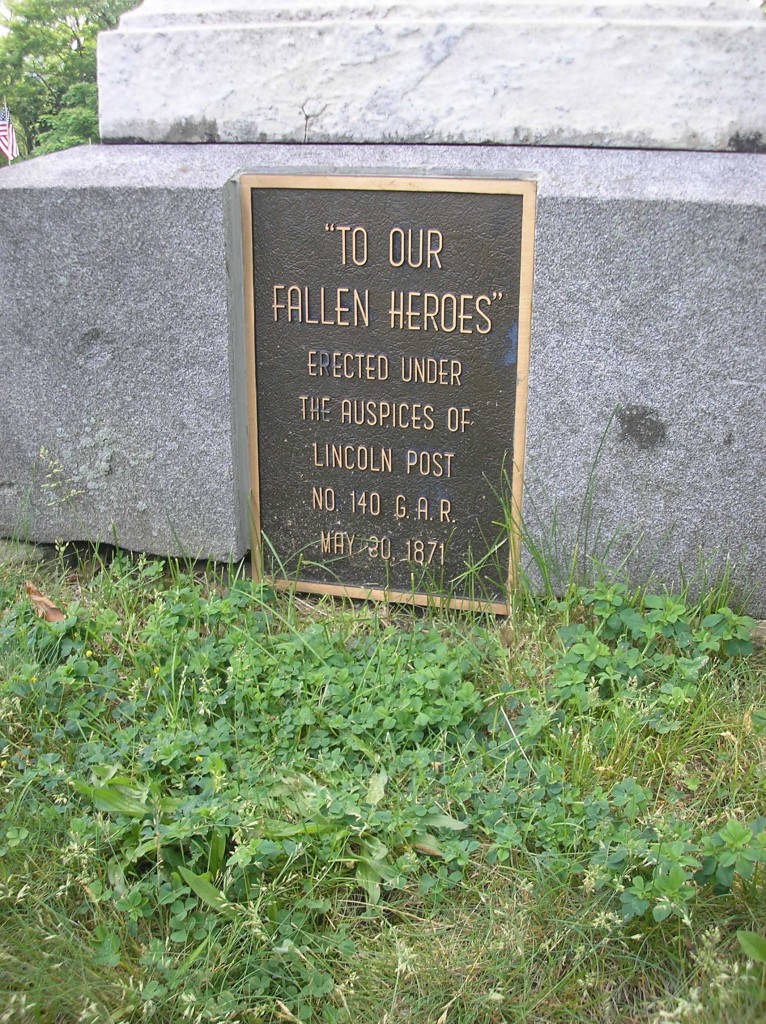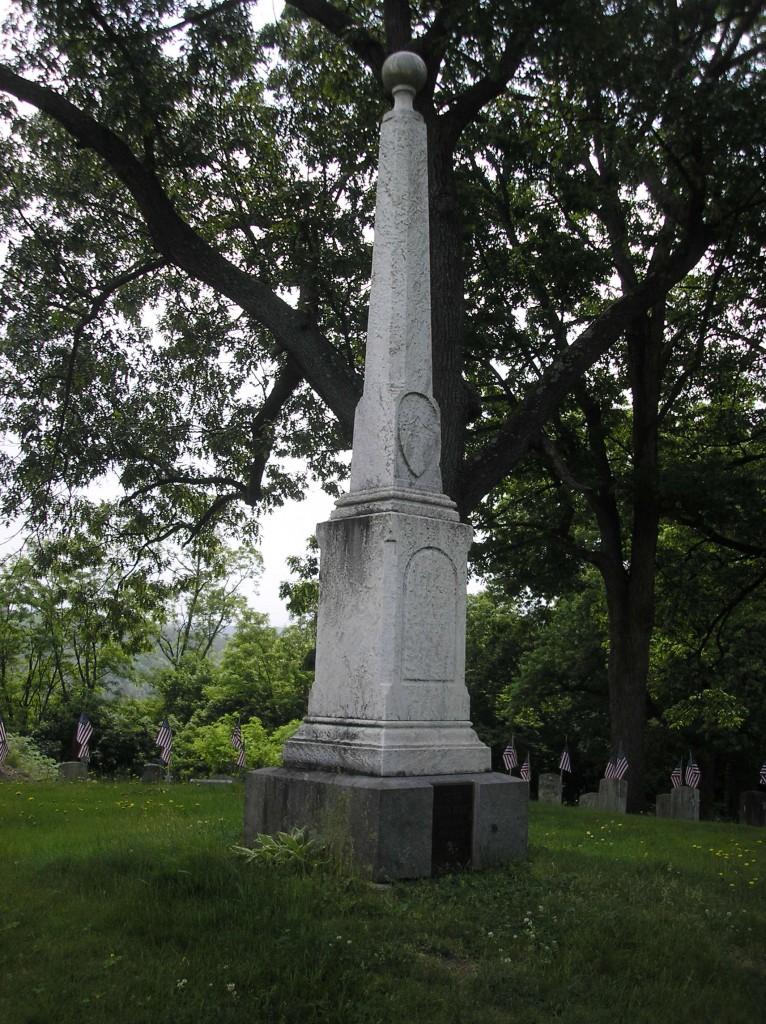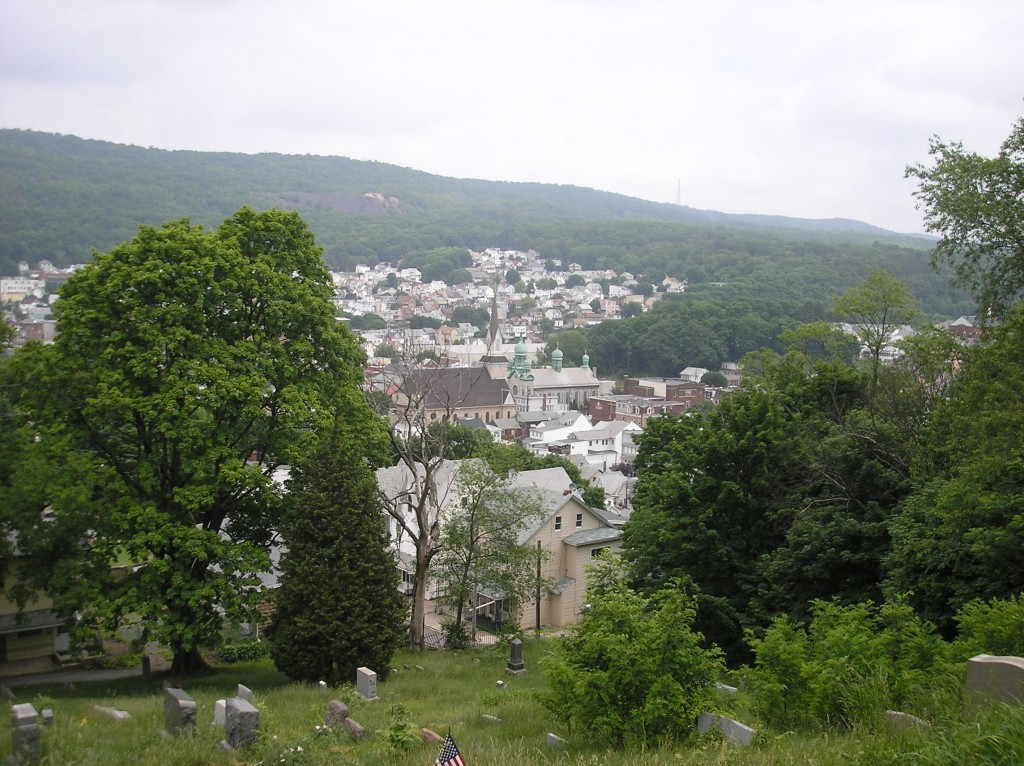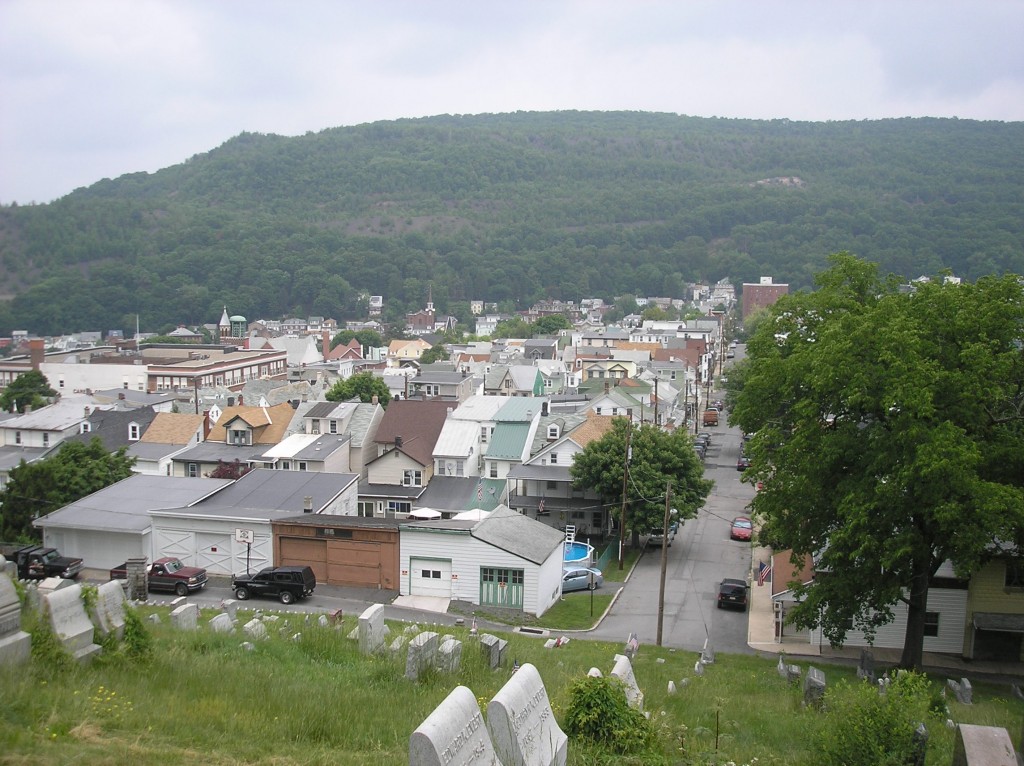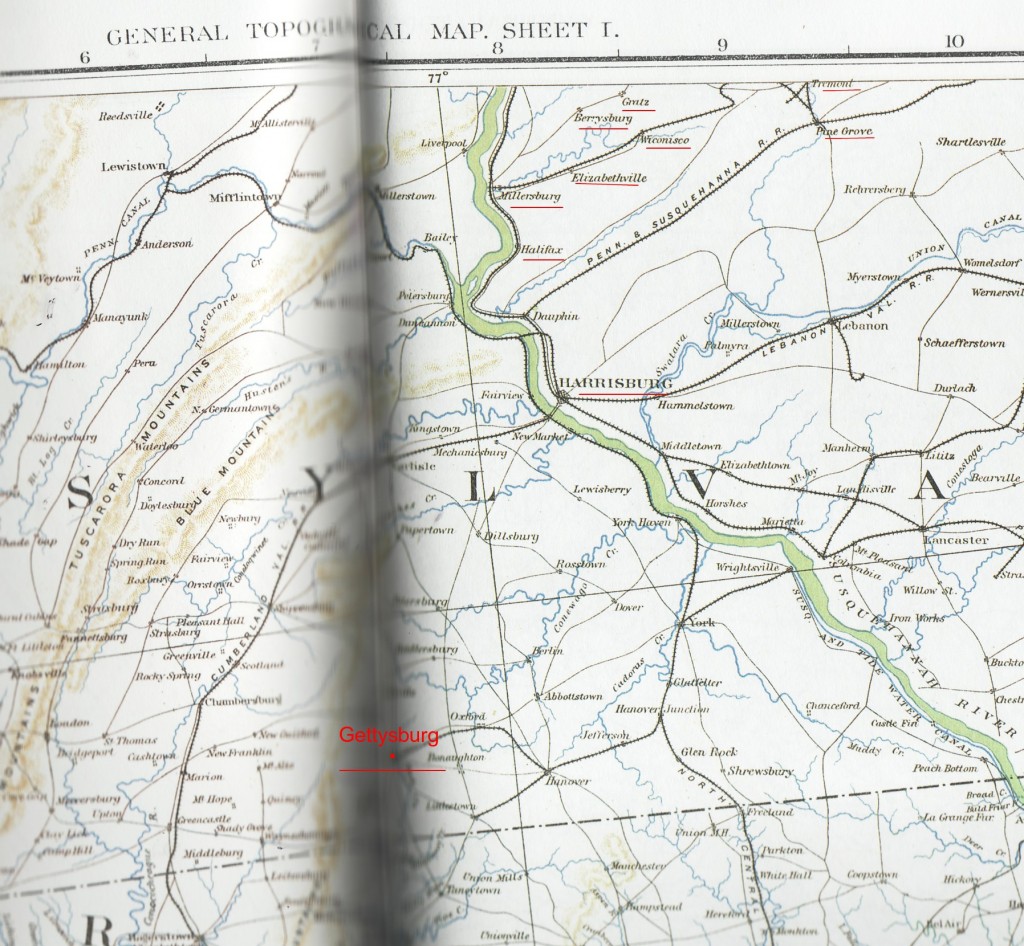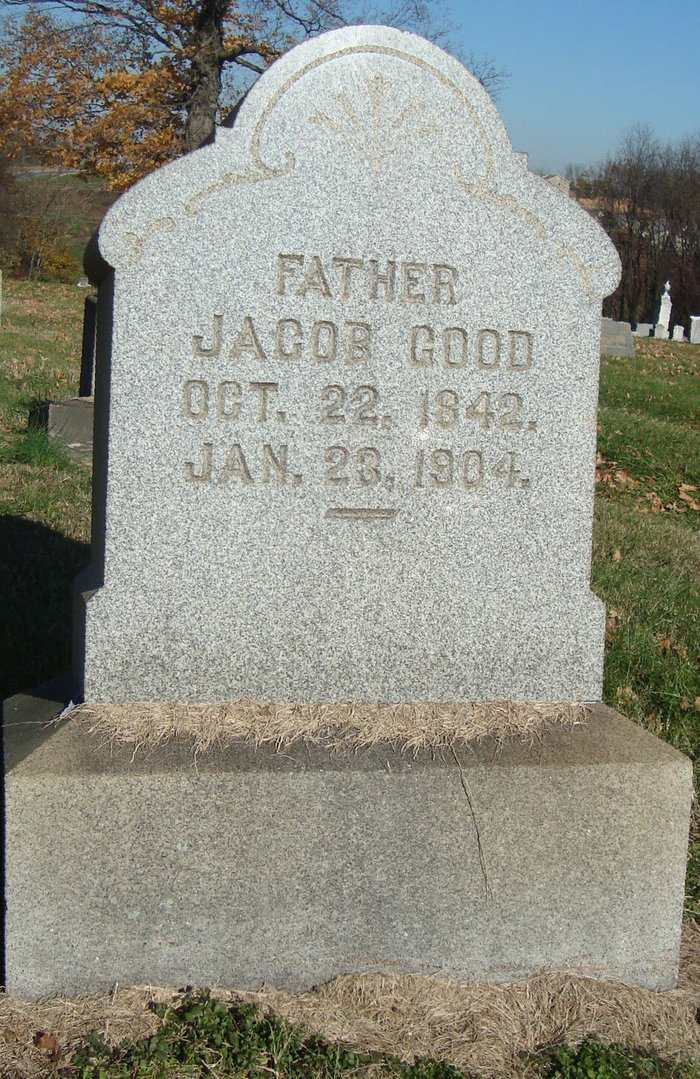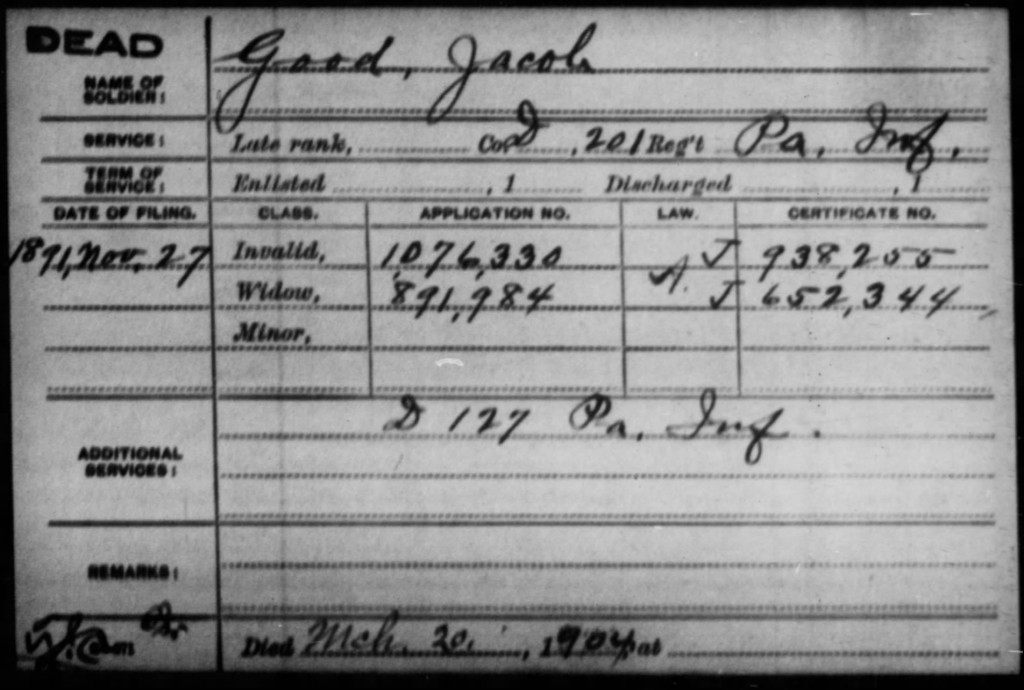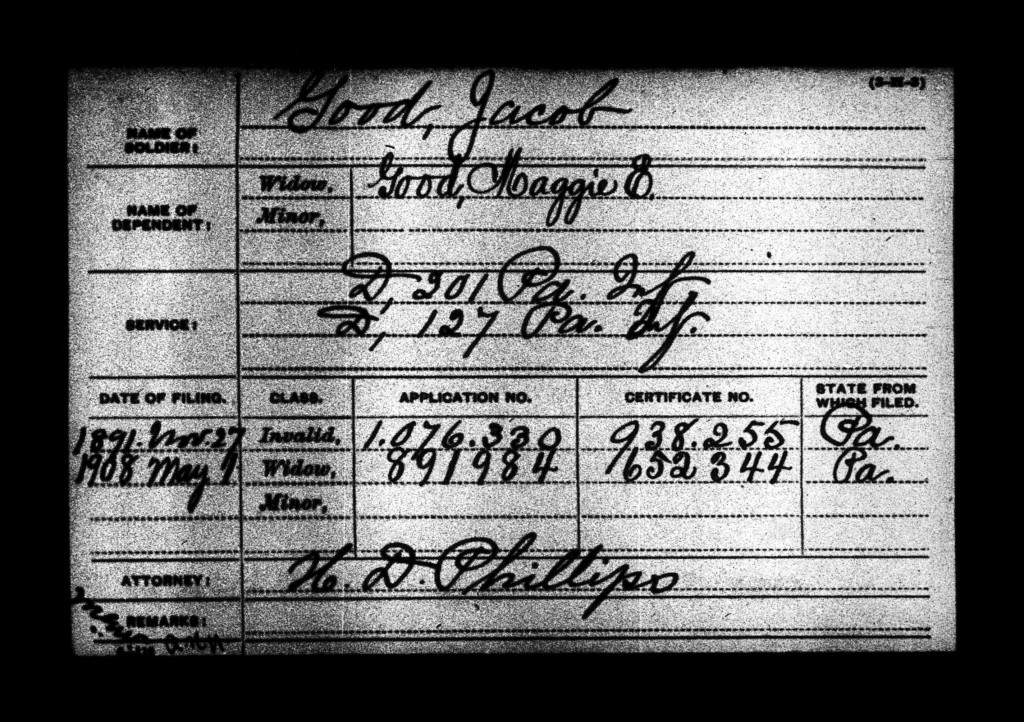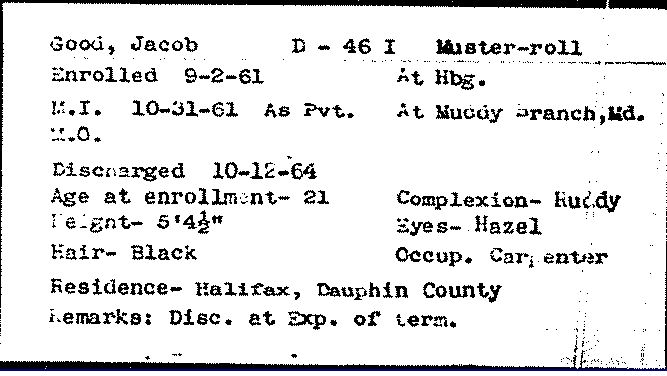Posted By Norman Gasbarro on October 25, 2012

Some questions have come to the Civil War Research Project about one of the names on the Lykens G.A.R. Monument. That individual is a George Samuels, about whom little is known. Who was George Samuels? What was his occupation? Where was he born and where did he live? Did he have a family? What was his Civil War service? Where did he die and where is he buried?
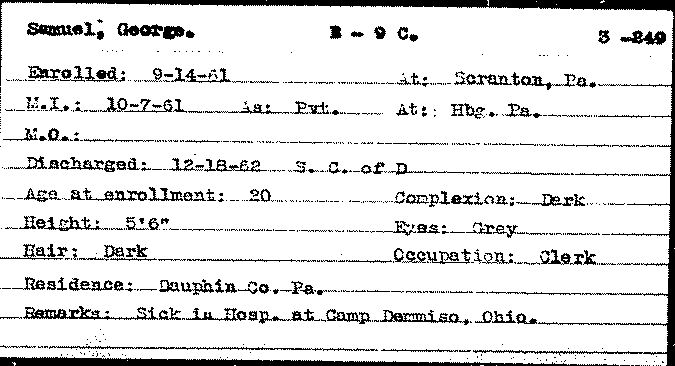
The initial information about George Samuels was that he was not a member of the Heilner Post, G.A.R., of the Lykens-Wiconisco area of Dauphin County. That is noted on the monument by the fact that he is listed with the non-members. Also known is that he served at the rank of Private. But efforts to find him in local records (census, church and cemetery records, etc.) have thus far produced no positive results. In the Pennsylvania Archives Veterans’ Card File, there is a card (pictured above) for a “George Samuel” who served in the 9th Pennsylvania Cavalry, Company B, as a Private. This particular regiment and company was recruited from Dauphin County and was composed almost completely of men who had some connection to the upper part of the county, the Lykens Valley area that is covered by the Civil War Research Project. The card notes that the “George Samuel” who served in this company/regiment resided in Dauphin County at the time of his enrollment. However, the enrollment took place in Scranton, Lackawanna County, Pennsylvania, 14 September 1861. At the time of enrollment, “George Samuel” was 20 years old (born about 1841), stood 5′ 6″ tall, had dark hair, gray eyes, and dark complexion. His occupation was “clerk.” The “muster in” took place in Harrisburg, Dauphin County, on 7 October 1861. The card also indicates that George Samuel was discharged on a Surgeon’s Certificate of Disability on 18 December 1862, and at some point in his service, he was “sick in hospital, Camp Denniso [sic], Ohio.” The camp name was actually “Camp Dennison,” and in checking on the history of that camp, there was a hospital there. Its location was not too far from the Ohio/Kentucky border where the city of Cincinnati is situated.
Can we assume that this George Samuel is the same person as the George Samuels who is named on the Lykens G.A.R. Monument? It seems reasonable that in the absence of any other person of the same or similar names in the Lykens Valley area at that time, and the confirmation that George Samuel had residence in Dauphin County (per his Veterans’ Index Card) as well as the knowledge that Company B of the 9th Pennsylvania Cavalry was a company/regiment company composed heavily of local men, the conclusion can be made that it is the same person. There is one additional factor that leans toward accepting this conclusion. William Thomas, the diarist of the 9th Pennsylvania Cavalry, and the person upon whose diary the history of the 9th Pennsylvania Cavalry (Yankee Cavalrymen) was based, was also from Lykens and his information would have been available to those who constructed the monument. However, there is no mention of a George Samuel or George Samuels in Yankee Cavalryman. This does not mean that the diary of William Thomas contained no reference to him. As has been previously noted on this blog, a typescript of that diary existed about 30 years ago when Yankee Cavalrymen was written, but efforts to locate it as well as the original diary itself, have not been successful.
Pursuing the hypothesis that the George Samuel who served in the 9th Pennsylvania Cavalry is the same person who is named on the Lykens G.A.R. Monument, a search of other records of that regiment could produce additional information. Fold3 is a resource site for military records. Whereas the Pension Index Cards that are available through Ancestry.com do not allow searching by regiment and company – only by the name of the veteran – those on Fold3 (actually a different set of the index cards) can be searched by regiment and company. By looking specifically at the cards for the 9th Pennsylvania Cavalry, Company B, the following card was discovered:
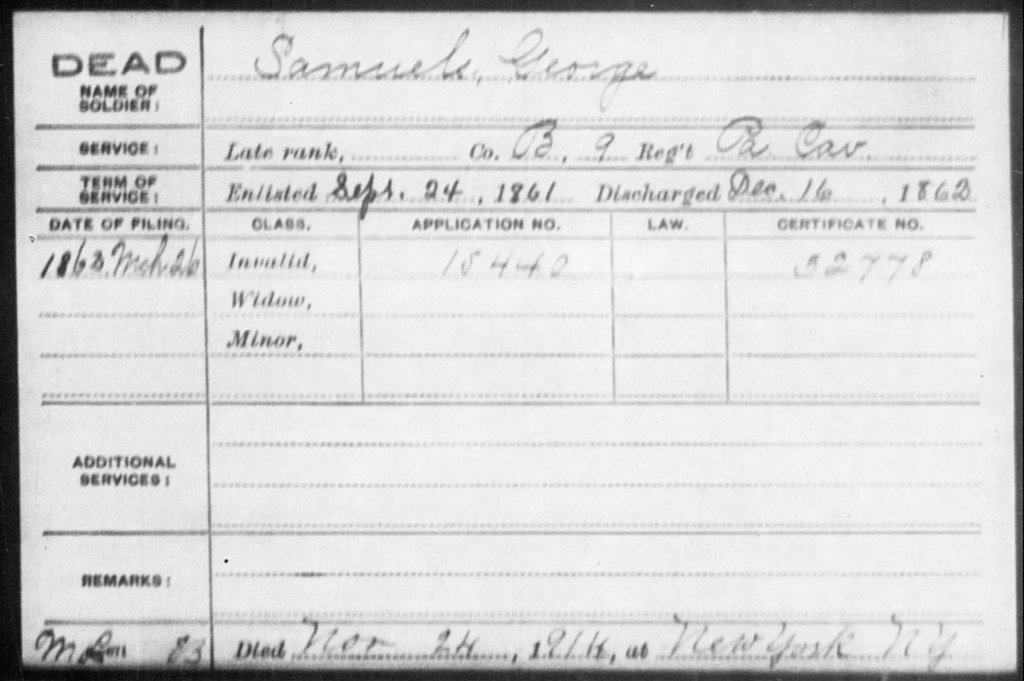
The cards of Fold3 usually contain an additional piece of information not available on those available through Ancestry.com – the actual death date and place of death of the veteran. This lucky find for George Samuels indicates he died on 24 November 1914 in New York City. The card also confirms that “George Samuel” and “George Samuels” are the same person – in that the pension records show that “Samuels” was the name under which the pension was applied for – despite the fact that the military records (at the Pennsylvania Archives) show that he was enrolled as “Samuel.” The piece of information is also good fortune in that if George Samuels can be located in New York City in the 1910 Census, there is the possibility that he may have indicated “Union Army” service (information collected in 1910), and this would further confirm that the person found is the same person who is named on the Lykens G.A.R. Monument.
George Samuels was located in the 1900 Census for New York City (below). He was living in the household of Benjamin Applebaum, a clerk. According to the census, Benjamin Applebaum was the son-in-law of George Samuels – married to George’s daughter Minnie. There were children in the household (grandchildren of George) and the residence appears to be an apartment – location given as 23 West 112th Street, New York City. George Samuels was working as a post office attendant (a clerical position – consistent with his pre-Civil War occupation). New information: he was born in Germany and emigrated to the United States in 1860 and was a naturalized citizen. His foreign birth and immigration date explain why he was not found in any Lykens Valley census or church records for the Civil War period.

Click on document to enlarge.
George Samuels was located in the 1910 Census (below) for New York City – at the same address – and this time as the head of the household which consisted of his son-in-law and daughter Minnie and their children. George was working as an Inspector at the Customs House and his son-in-law, Benjamin Applebaum, is a salesman for a gas company. The key piece of evidence sought from the 1910 Census – that this George Samuel had Civil War service – is found in one of the columns to the right (red circle on census sheet). “Union Army” is written in the appropriate box!

Click on document to enlarge.
A final piece of confirming evidence is the New York City Census of 1915 (below). The George Samuels who served in the 9th Pennsylvania Cavalry, Company B, died in 1914, so he would not be alive for the New York City Census of 1915. From the 1915 Census, it is learned that Benjamin Applebaum and family are living at the same address – but there is no George Samuels in the household.

Click on document to enlarge
In looking at the characteristics of the neighborhood in which George Samuels resided in New York, it can be noticed that there were a good number of immigrants from Russia and Germany. The wife of George Samuels (the mother of Minnie), has not yet been identified but it probably can be assumed that she died before 1900 (George is then a widower). If a marriage record can be located, it would probably be around or before the year Minnie was born – about 1875. Were there other children? Following through by tracing the descendants of Benjamin Applebaum may not produce positive results – he had three daughters – but is still one possible avenue of research.
No good result has been obtained for the Census of 1880 or the Census of 1890 (Veterans and Widows). Searches have been made in the New York Times Index for a George Samuels’ obituary with no results. There is no George Samuels currently listed in Findagrave with a death date of 1914 and the approximate birth year of 1841. The search for answers may have reached a dead end – until someone comes forward with additional information. Much of that information could possibly be found in the actual pension application files and the military record (available from the National Archives and the Pennsylvania Archives).
In writing the history of all those who served in the Civil War who have some connection to the Lykens Valley area, it is important to find out as much as possible about those who moved away as well as those who stayed. The name of George Samuels is permanently memorialized on the Lykens G.A.R. Monument. Hopefully, his full story can be revealed and told.
Comments to this blog post can be added (below) and/or submitted directly to the Civil War Research Project (via e-mail – click here) or sent to Sally Reiner, President of the Lykens-Wiconisco Historical Society (click here).
Category: Queries, Research, Resources, Stories |
1 Comment »
Tags: G.A.R., Lykens Borough, Wiconisco
 ;
;

